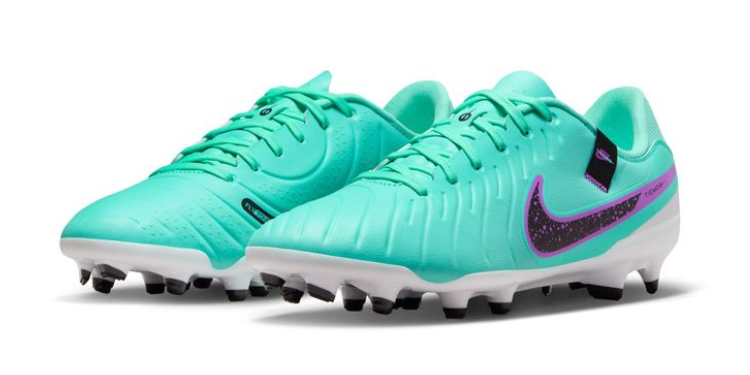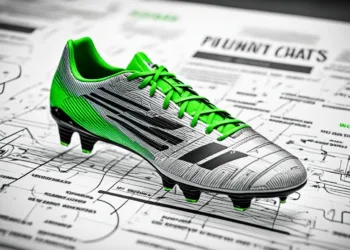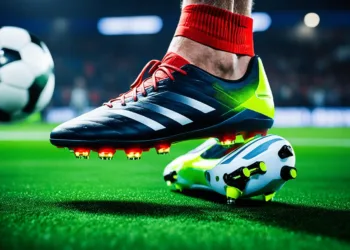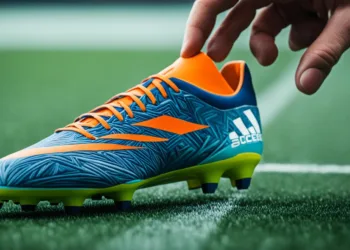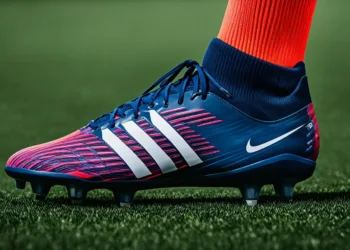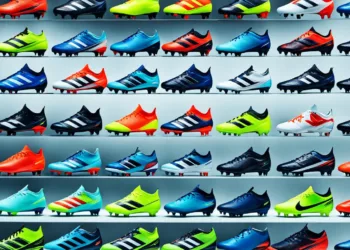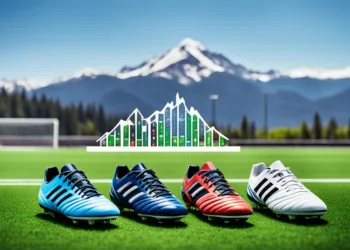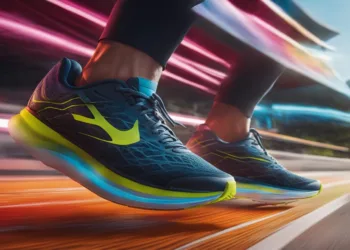Table of Contents
Understanding the lifespan of soccer cleats plays a pivotal role in maintaining peak performance and avoiding injuries on the field. Aspects such as frequency of usage, quality of material used, and upkeep of the cleats contribute to maximizing the life of soccer cleats. While a casual player might see their boots last a year or more, regular, competitive play could require a new pair each season.
In general, soccer shoes constructed with premium materials such as genuine leather or high-quality synthetic materials have a longer lifespan than cheaper alternatives. However, the lifespan of soccer cleats is also influenced by how well you can recognize signs of wear and tear and when the right time to replace your cleats is. Common indicators include a waning level of comfort or support from diminished insole cushioning and signs of physical damage like holes or detached soles.
Enhancing your knowledge of these factors can guide your decisions, ensuring an optimal extension of soccer shoe life and performance on the field. Remain mindful of these variables, and you’ll ensure your cleats serve you well throughout their lifespan, enabling you to concentrate on what matters most: the game itself.
Key Takeaways:
- Determinants of Lifespan: Factors affecting soccer cleats lifespan.
- Time for Replacement: Recognizing when to replace cleats.
- Maximizing Cleat Life: Strategies to prolong cleat use.
- Maintenance Matters: Importance of regular cleat care.
- Two-Pair Approach: Rotating between two pairs of cleats.
The Determinants of a Soccer Cleats Lifespan
Understanding the factors affecting soccer cleat durability can help you develop long-lasting soccer cleat practices, thus prolonging soccer cleat use. From the frequency of usage to the quality of material, many elements influence the lifespan of your soccer cleats. Let’s examine these determinants in depth.
The Role of Usage Frequency in Cleat Wear and Tear
Unsurprisingly, how often you use your soccer cleats is crucial in how long they last. Regular wear and tear begin to show in a season or two, particularly with multiple weekly uses. The more frequently you play, the sooner your cleats will need replacement. Therefore, having a dedicated pair solely for matches and another for training sessions can optimize each pair’s durability and overall performance.
Material Quality and Its Impact on Durability
Next, the quality of the materials and craftsmanship contributes significantly to the durability of soccer cleats. Premium soccer cleats, made with high-end materials like genuine leather or quality synthetic material, inevitably outlast cheaper options. Besides prolonging the lifespan of your cleats, they also provide optimal comfort and efficiency for a better gameplay experience.
Cleat Degradation: What Happens During Play
During a soccer match or training session, your cleats undergo intense conditions. They support sharp twists, abrupt stops, and sprints, all while providing necessary traction and ball control. Regular exertion gradually degrades your cleats’ effectiveness, deteriorating its crucial characteristics over time. When choosing your soccer cleats, consider ones designed with durable synthetic materials or genuine leather uppers, as they can withstand frequent use better than those made with subpar materials.
“Read more: Soccer Cleats Outlet: Great Deals Await“
Recognizing the Time for Soccer Cleats Replacement
Suppose you’re a soccer enthusiast, a professional player, an aspiring amateur, or a weekend warrior in community leagues. In that case, it is critical to understand when to retire your trusty pair of soccer cleats. With our Soccer Cleat Durability Tips, you can better navigate this continuation of your athletic journey, ensuring you maintain on-field comfort and safety.
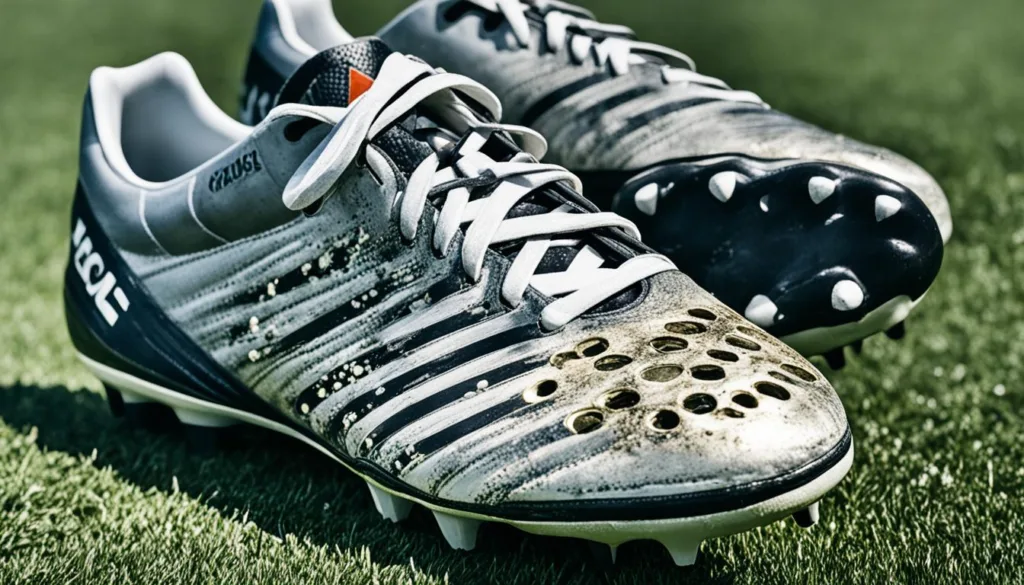
Interpreting Signs of Diminished Performance and Comfort
Decreased support and comfort during play might not just be a result of a grueling game or lack of conditioning. They can be early cleats replacement indicators signaling a decline in soccer cleats’ insole and midsole cushioning. Feeling soreness in your feet after a match or discomfort when running could very well mark the beginning of the end for your current pair of soccer cleats.
Identifying Physical Damage: When Safety Becomes a Concern
Visible damage also plays a significant role in determining when to bid farewell to your soccer cleats. Signs such as holes at the front or detachment of the sole are undeniable indicators that it’s time for a new pair. In such circumstances, immediate replacement is necessary to maintain safety and prevent potential injury.
Changes in your on-field performance like slipping during direction changes, decreased grip, or instability in controlling the ball can be traced back to worn-out cleats. These adverse effects further underline the importance of recognizing cleats replacement indicators for maintaining on-field comfort and enhancing your gaming experience.
| Soccer Cleat Durability Tips | Indicators | Consequences |
|---|---|---|
| Comfort and Performance | Discomfort, soreness, decreased support during games | Decline in insole and midsole cushioning |
| Safety Indicators | Holes at the front, sole detachment | Potential injury, necessary immediate replacement |
| On-field Indicators | Slipping, decreased grip, control instability | Adversity affects on-field performance |
“Read more: Soccer Cleats for Wide Feet: Comfort and Fit“
Maximizing the Life of Soccer Cleats
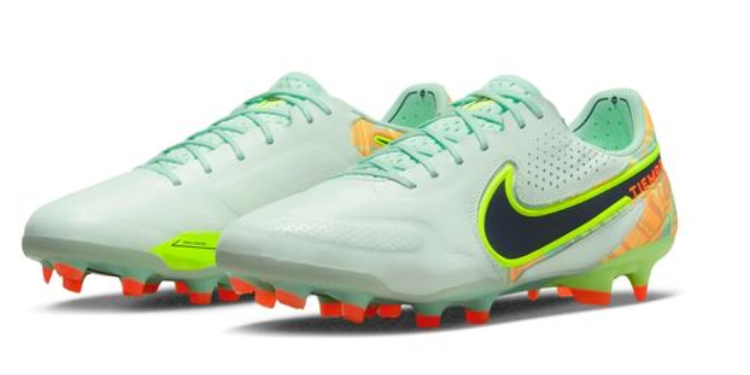
Prolonging soccer cleat use isn’t a by-product of luck; it involves conscious effort. Simple practices can help ensure your cleats serve you optimally on the field for extended periods. Let’s delve into these tips for a longer cleat lifespan.
The first step to maximizing soccer cleats durability involves being mindful of the playing surfaces. For example, abrasive artificial turf can hasten cleat deterioration. Therefore, opt for natural grass surfaces or high-quality synthetic grass that isn’t overly rough on your cleats.
Next, minimize walking on hard and abrasive surfaces like concrete and gravel. These surfaces can be harsh on cleat studs primarily designed to maintain grip and performance on the pitch. Minimizing exposure to such surfaces preserves the studs, extending the shoes’ utility.
- Step one: Be mindful of the playing surface
- Step two: Avoid walking on hard and abrasive surfaces
Moreover, proper cleat care forms a significant part of the maintenance regimen. This involves regularly cleaning, drying, and storing your cleats in an appropriate environment. Avoid stuffing your muddy cleats into your bag after a match or training. Instead, clean them thoroughly, allow them to dry, and store them in a safe, clean environment.
Correct cleat care isn’t merely beneficial for aesthetic purposes and helps prevent bacterial growth, moisture buildup, and unpleasant odors. Above all, it slows down material degradation, which could reduce the efficacy of your cleats over time.
Let’s break down proper cleat care into a simple table to visualize its importance better:
| Component | Activity | Benefit |
|---|---|---|
| Cleaning | Removing mud and grime after each use | Preserves the material and visual appeal |
| Drying | Allowing the cleats to air dry in a cool and shaded place | Prevents moisture damage and bacterial growth |
| Storage | Keeping the cleats in a clean, dry, and safe environment | It helps maintain the cleats’ shape and slows down material degradation |
Remember, your soccer cleats are your tools of the trade. And like any other tool, their lifespan and functionality largely depend on how they’re used and maintained. Therefore, follow these tips for a longer cleat lifespan and enjoy more games with your reliable soccer cleats.
“Read more: Soccer Cleats Adidas: Cutting-Edge Technology“
Tips for Longer Cleat Lifespan: Maintenance Matters
The maintenance routine plays an integral role when it comes to enhancing the life of soccer cleats. It is essential to follow certain Soccer Cleat Durability Tips and Soccer Shoes Maintenance techniques to ensure that the product serves you for a prolonged period. Let’s delve into these pointers.
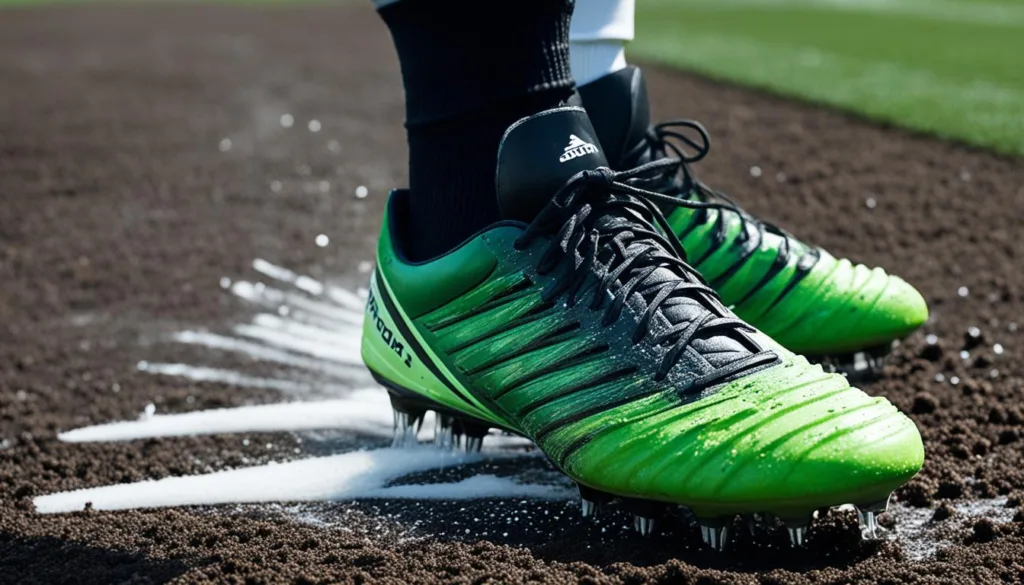
Post-Game Cleaning Best Practices
In the aftermath of every game, remember to clean your cleats thoroughly. This step is an absolute must to prevent the accumulation of dirt and mud, which can expedite wear and tear. Use a stiff brush to scrape off the dirt from the surface, and use a damp cloth to clean the remaining residue. Be gentle during the cleaning process to avoid causing any potential damage to the cleats.
The Do’s and Don’ts of Drying Soccer Shoes
Once you’re done cleaning, it’s time to dry the cleats. Air drying is recommended as it causes the least damage to the materials. Avoid placing the cleats in direct sunlight or near artificial heat sources like radiators, as these could cause alterations in the material making them less durable.
Proper Storage Techniques for Optimal Preservation
Best practices in soccer shoe storage are as crucial as cleaning. Store your dry, clean cleats in a cool, dry place. This helps prevent bacterial growth that can lead to foul odour and degradation of the material. Use cleat coverings or shielding sleeves to protect against scuffs and unwarranted wear during storage or shipping.
| Maintenance Steps | Description |
|---|---|
| Post-Game Cleaning | Remove all dirt and mud from the cleats. Use a stiff brush and a damp cloth. |
| Drying Process | Dry your soccer shoes naturally. Avoid direct sunlight and artificial heat sources. |
| Proper Storage Techniques | Store in cool, dry places. Use protective coverings and shielding sleeves for additional protection. |
In conclusion, meticulous care routines and proper techniques enhance cleat life. Remember, small steps to maintain your soccer shoes can lengthen their durability and ultimately contribute to improved performance on the field.
Protection and Care: Extending Soccer Shoe Life
For those dedicated to playing soccer, ensuring the longevity of their gear is crucial. And this holds for one of the most significant pieces of the puzzle – the soccer cleats. With the proper methods and foresight, you can effectively extend your soccer shoe lifespan and maximize the value of your cleats. Focus on these long-lasting soccer cleat practices to bolster your cleats’ utility and durability.
Invest in Cleat Coverings and Shielding Sleeves
One simple yet effective way to protect soccer cleats is by investing in cleat coverings and shielding sleeves. These accessories help prevent scuffs and scratches and limit unnecessary wear and tear on the shoe, a crucial factor in enhancing soccer shoe lifespan. These coverings are designed to fit over the cleat, offering a robust shield during storage and non-play periods. This protective layer ensures your cleats stay in impeccable condition for longer, offering unparalleled performance when you hit the field.
Importance of Surfaces: Where to Walk to Reduce Wear
Awareness of the surfaces you walk on while wearing your soccer cleats is equally critical. Surfaces like concrete, gravel, or any harsh terrains invariably wear down the studs on the cleats. This deterioration can significantly affect their traction and overall performance on the field over time. As a rule of thumb, limit the usage of your soccer cleats to grassy grounds or soccer fields to prevent premature breakdown. Venturing on rough surfaces should be avoided when wearing your cleats to protect them from unnecessary damage.
By endorsing these protective measures, you can fortify the lifespan of your soccer cleats, ensuring their long-lasting usage. Remember, every step towards better care and preservation enhances the performance and extends the lifespan of your soccer shoes.
Read more: Soccer Cleats Odor Control“
Prolonging Soccer Cleat Use: A Two-Pair Approach
Adopting a two-pair approach can offer substantial benefits as a player seeking to maximize your soccer cleat’s lifespan. Owning two pairs of cleats allows you to rotate their usage, extending their overall life. This strategy will enable you to diversify the wear between practice and game cleats, evenly distributing the stress and deterioration.
Although having two pairs might seem initially costly, selecting two pairs of mid-tier cleats instead of one high-end pair can prove more economical in the long run. This approach helps lessen the wear on a single pair and maintain optimal conditions for more extended. By doing this, you’re extending your soccer shoe life and saving money in the long run.
Coupling this strategy with essential maintenance steps, such as cleaning and proper storage, your soccer cleats’ durability and performance can considerably improve. While using this two-pair approach, it’s equally crucial to heed the soccer cleat durability tips covered in earlier sections of this article.
In conclusion, The lifespan of your soccer cleats is determined by various factors, including the quality of the pair, your play style, and how well you take care of them. Whether you’re wearing new cleats or your favourite pair, understanding these factors can help you maximize the life of your cleats. Each strategy contributes to a longer cleat lifespan, from recognizing when it’s time for a replacement to implementing a two-pair approach. So, invest some time in understanding your cleats – your performance on the field may depend on it.


